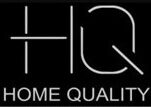Call
-
-
Email
Info@home-quality.be
-
Address
Groenhoek 2 B, 2220 Heist op den Berg
Call
Address
Content
A contra account is an account with a balance opposite the normal accounts in its category. Contra accounts are usually linked to specific accounts on thebalance construction bookkeeping sheetand are reported as subtractions from these accounts. In other words, contra accounts are used to reduce normal accounts on the balance sheet.
Learn financial statement modeling, DCF, M&A, LBO, Comps and Excel shortcuts. Globally Accepted Accounting PrinciplesGAAP are standardized guidelines for accounting and financial reporting. Notes receivables are promissory notes that include a promise from a borrower to repay a lender. Companies that hold inventories for a long time may face accumulating obsolete inventory. Suppose a clothing business has sold $50,000 of inventory on credit. The company uses the straight-line depreciation method for the car.
In the event that a contra account is not utilized, it can become increasingly troublesome to determine historical costs, which makes tax preparation time-consuming and difficult. In accounting, assets are things of value that your business owns. Your bank account, the inventory you currently stock, the equipment you purchase, and your accounts receivable balance are all considered asset accounts. The most common type of contra account is the contra-asset account. This type is paired with the asset account, which allows a business to record the original price or value of the asset at time of purchase.
Nova Incorporated is attempting to finalize their balance sheet in terms of the net value of their assets. At the end of the year, their assets are as follows… Nova Company valued a van at $30,000, an office building at $500,000 and office equipment at $20,000. At the same time, depreciation for the van at the end of the year ended up at $500. And the depreciation for the office equipment ended up at $1,000. Contra asset accounts are useful tools in double-entry accounting. They are also helpful for keeping the books balanced and creating a clear trail of financial breadcrumbs for historical review and reporting.
The projected bad debt expense is properly matched against the related sale, thereby providing a more accurate view of revenue and expenses for a specific period of time. In addition, this accounting process prevents the large swings in operating https://www.archyde.com/how-do-bookkeeping-and-accounting-services-affect-the-finances-of-real-estate-companies/ results when uncollectible accounts are written off directly as bad debt expenses. At the end of year 20, the car and the accumulated depreciation accounts will be written off from the balance sheet, as the car will be a fully depreciated asset.
What Is a Contra Account & Why Is It Important?.
Posted: Tue, 12 Jul 2016 22:04:42 GMT [source]
Plant and machinery, land and buildings, furniture, computers, copyright, and vehicles are all examples. Net receivables are the money owed to a company by its customers minus the money owed that will likely never be paid, often expressed as a percentage. The percentage of sales method assumes that the company cannot collect payment for a fixed percentage of goods or services that it has sold. Intangible assets include assets that do not have physical substance, but provide future economic benefits. Inventories include merchandise or goods that are ready to be sold, and other assets that are in the process of producing goods.
